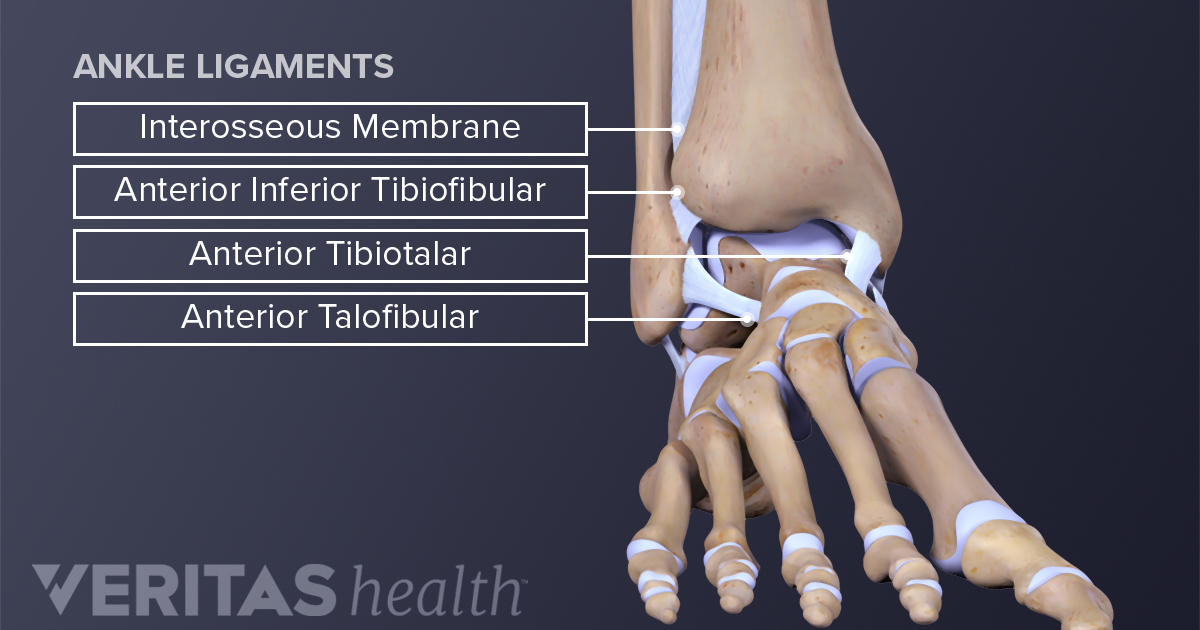Ankle sprains are a common injury that may often seem like just a minor inconvenience. However, there is potential for ankle sprains to be a greater concern than one might expect. The role of Physical Therapy in the treatment of ankle sprains is equally as important as the focus on prevention prior to injury.
 When someone sprains their ankle, there is a multitude of damage to areas such as the ligaments, tendons, and even bones. Even with a minor injury when someone rolls their ankle, the ligaments and tendons of the ankle are often over stretched. This over-stretching results in less structural support of the ankle and causing it to become unstable. This provides less physical defense against future sprains.
When someone sprains their ankle, there is a multitude of damage to areas such as the ligaments, tendons, and even bones. Even with a minor injury when someone rolls their ankle, the ligaments and tendons of the ankle are often over stretched. This over-stretching results in less structural support of the ankle and causing it to become unstable. This provides less physical defense against future sprains.
Many people don’t realize this, but the ligaments and tendons actually send both conscious and unconscious information to our brain regarding how our feet are positioned and what the surface is like beneath them. This information allows our body to properly balance and adjust our feet in order to stand or move on surfaces that might be uneven such as rocky trails while hiking. When these structures get overstretched, the information they send to our brains becomes compromised.
 This means that when we step on a rock, a branch, or the even fun hot wheels car our kids left in the middle of the floor, our bodies will not properly perceive the object as it should. The result is improper positioning and weight bearing over the injured ankle. This will likely increase the chance of respraining the same ankle. This can lead to a vicious cycle in which each sprain continues to comprise the ankle’s stability and lead to additional sprains in the future.
This means that when we step on a rock, a branch, or the even fun hot wheels car our kids left in the middle of the floor, our bodies will not properly perceive the object as it should. The result is improper positioning and weight bearing over the injured ankle. This will likely increase the chance of respraining the same ankle. This can lead to a vicious cycle in which each sprain continues to comprise the ankle’s stability and lead to additional sprains in the future.
Physical therapy provides not only a treatment option for those suffering from recent ankle sprains, but a prevention from reinjury and development of chronic ankle sprains. PT helps to reduce the pain and swelling that occurs after an ankle sprain. But more importantly it provides improved ankle stability and strength through individualized exercise programs.
 The strengthening exercises enhance the physical defense of the ankle to better cope with the stresses that the ankle is frequently subjected to. In addition, specific balance and stability exercises during treatment help reset the sensory system (proprioception) of the ankle that was compromised during the sprain. This allows the ankle and foot to send proper information to the brain again so it can prevent the sprain from even occurring.
The strengthening exercises enhance the physical defense of the ankle to better cope with the stresses that the ankle is frequently subjected to. In addition, specific balance and stability exercises during treatment help reset the sensory system (proprioception) of the ankle that was compromised during the sprain. This allows the ankle and foot to send proper information to the brain again so it can prevent the sprain from even occurring.
Recent research has shown that early treatment (preferably within the first 24-72 hours after injury) leads to substantially reduced rehab time. Whether you’re and athlete needing to get well before the next game or someone who doesn’t want to be in pain and hampered by immobility, acute treatment is critical.
 Did you know you don’t need to see your doctor before beginning physical therapy? Since 2006, Connecticut has implemented the Direct Access Act, meaning that you do not need a referral or prescription to begin your physical therapy treatment.
Did you know you don’t need to see your doctor before beginning physical therapy? Since 2006, Connecticut has implemented the Direct Access Act, meaning that you do not need a referral or prescription to begin your physical therapy treatment.
Want to get back to your life sooner? See your PT FIRST!
 Robert Presta, DPT is a licensed physical therapist who graduated with a Doctorate in Physical Therapy in 2016 from Quinnipiac University. He has worked with clients of various diagnoses and demographics, with a focus on the outpatient orthopedic setting. Besides working as a physical therapist, he has a particular interest in physical performance, strength, and conditioning. His research on biceps brachii torque curve analysis was showcased at the American College of Sports Medicine Annual meeting to help further biceps strengthening protocols. Rob is current looking at furthering his knowledge base with continued education in areas such as the Selective Functional Movement Assessment that will help expand his skillset. Click here to schedule an appointment with Rob, or call our Hamden office at (203) 691-6248
Robert Presta, DPT is a licensed physical therapist who graduated with a Doctorate in Physical Therapy in 2016 from Quinnipiac University. He has worked with clients of various diagnoses and demographics, with a focus on the outpatient orthopedic setting. Besides working as a physical therapist, he has a particular interest in physical performance, strength, and conditioning. His research on biceps brachii torque curve analysis was showcased at the American College of Sports Medicine Annual meeting to help further biceps strengthening protocols. Rob is current looking at furthering his knowledge base with continued education in areas such as the Selective Functional Movement Assessment that will help expand his skillset. Click here to schedule an appointment with Rob, or call our Hamden office at (203) 691-6248


